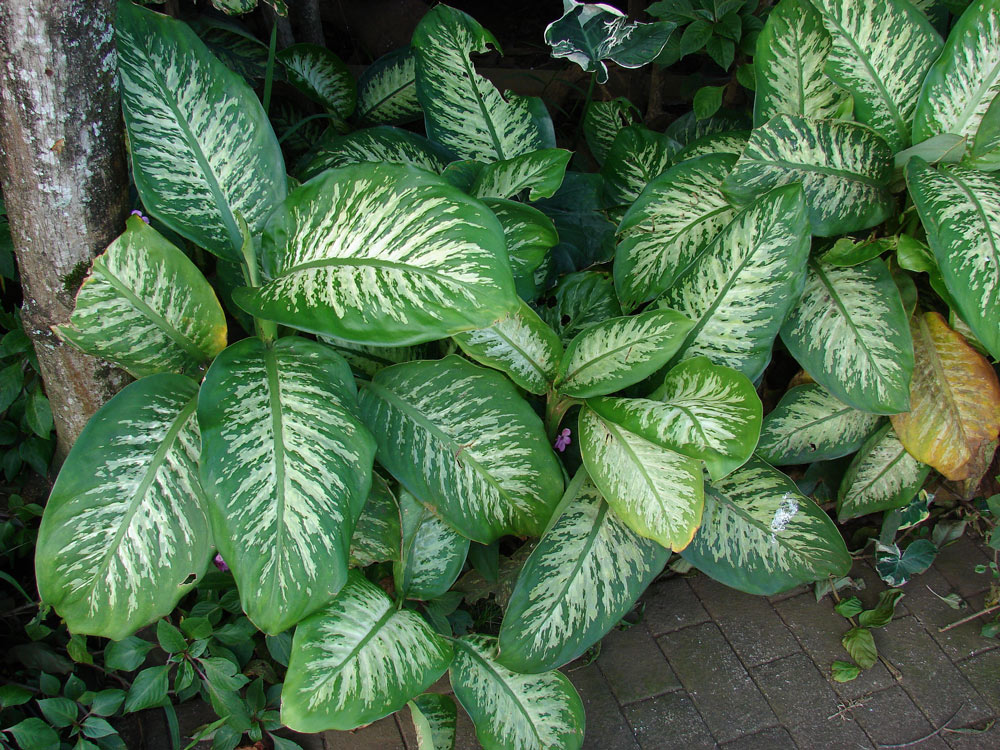Dumb cane a very popular houseplant with some nasty side effects:
“Sap from the dumb cane plant that gets into a human mouth will make the tongue swell, causing speechlessness in adults and sometimes killing children. This effect was used by slave-owners to torture unruly slaves working in Caribbean sugar plantations.”
Though I can’t find any further collaboration on the slave torturing story, there’s no doubt the dumb cane plant is a mean, mean herb.
When I had my first little plant nursery as a kid, I grew and sold dumb cane, AKA Dieffenbachia bowmannii.

See the dumb cane, just to the left of my face?
They take readily from cuttings and basically NOTHING eats the leaves, so they always look nice as a potted plant. They’re also tolerant of flooding and drying out, making them difficult to kill – another consideration most worthy when choosing houseplants.
This description of Dieffenbachia bowmannii from Infogalactic made me laugh, albeit very, very quietly:
“The common name, “dumb canes” refers to the poisoning effect of raphides, which can cause temporary inability to speak; for this reason it is also known as the mother-in-law plant.”
More on raphides:
“Raphides can produce severe toxic reactions by facilitating the passage of toxin through the herbivore’s skin when the tissue containing the raphides also contains toxins. The lethal dose to mice is around 15 mg/kg.[5] Raphides seem to be a defense mechanism against plant predators,[6] as they are likely to tear and harm the soft tissues of the throat or esophagus of a plant predator chewing on the plant’s leaves.[7][8] The venomous process is in two stages: mechanical pricking and injection of harmful protease. Typically ingestion of plants containing raphides, like those common in certain houseplants, can cause immediate numbing followed shortly by painful edema, vesicle formation and dysphagia accompanied by painful stinging and burning to the mouth and throat with symptoms occurring for up to two weeks.[9] Airway assessment and management are of the highest priority, as are extensive irrigation and analgesics in eye exposure.”
Takeaway: dumb cane is a pretty plant – just don’t eat it.
Unlike luffa, which is a trickster, this plant is never edible.
*Image at top via Starr Environmental. Creative Commons license.


3 comments
I have 2 of these plants in my office at work. They are beautiful, and I believe they are also air purifiers (I could be wrong). A quick look at infogalatic talks of its possible use in cancer treatment. Nature had a wonderful way of protecting itself.
Yeah, nature is good at that. I have some blisters on my left arm right now that nature gave me somehow. Maybe it will keep me from getting cancer!
What can I use around my plants so my kitty won’t eat the plants? She loves the difenbacia especially.
Comments are closed.